|
|
| |
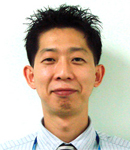 |
Chung |
1. Research Introduction
Computational Fluid Dynamics and its application to techniques, solutions, and the urban environment for wind engineering problem solving. With a strong understanding of theoretical fluid dynamics and analytical/numerical methods, In recent years, problems concerning the urban climate including the urban heat island effect and urban air pollution – have attracted much attention with the widespread urbanization throughout Japan.Urban areas has various types of buildings such as residences, offices, etc. Therefore, in meso-scale analyses, those buildings were generally modeled as roughness parameter. However, to increase the accuracy, more explicit estimates of the effects of urban geometry on the heat island are needed. But, a new approach should contain easily set-up parameters. Such urban geometric effects include the building coverage ratio and differences in physical constants between buildings and roads. For these improvements, an urban canopy-layer model for atmospheric models is needed.
2. Personal information
Research Field : wind enivronment
Education :
Sep, 1999 - Feb. 2005 - Ph. D degree of Civil engineering, Colorado State University, U.S.A.
Sep. 1996 - Aug. 1998 - M.S degree of Civil enginering, Yonsei University, Korea Mar. 1988 - Feb. 1996 - B.S degree of Physics and Civil engineering, Yonsei University, Korea
Working Experience :
Nov. 2004 - Jan. 2008 - Research center of Samsung Engineering & Construction, Korea Sep. 2008 - Current - G-COE researcher, Tokyo Polytechnic University, Japan. |
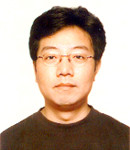 |
Isaac |
Dr. Yu-Fat Lun joined the Tokyo Polytechnic University in April 2009, as researcher for the Japan “Global Centers of Excellence” project on CFD simulation of indoor thermal comfort under various cross-ventilation conditions. He graduated with a BEng in Aeronautical Engineering and an MPhil in Computational Fluid Dynamics from University of Hertfordshire, UK, and a PhD in Computational Wind Engineering at Tohoku University, Japan. Dr. Lun is a member of the Architectural Institute of Japan, the Institution of Mechanical Engineers and the Royal Aeronautical Society. His research interests include CFD applications, urban thermal environment, wind environment, urban energy consumption, building energy simulation.
Dr. Lun has been involving in various fluid dynamics works using computational (Computational Fluid Dynamics, CFD) and experimental methods. Among these works are:
modeling airflow over complex terrains;
prediction of pedestrian level wind and thermal environments in urban areas;
simulating windflow around airport buildings;
macro-scale windflow simulation using CFD for entire housing estate;
experimental study of the effects of eaves on flowfield and wind loads of low-rise houses;
modeling the onset of slug flow, one of the most critical flow types found in offshore pipelines. |
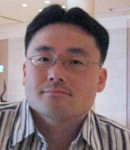 |
Yongchul KIM |
Hi. My name is Yongchul KIM, and I was born and raised in Korea. It has been 5 years since I came to Japan. I graduated from the University of Tokyo at 2009, and now I am a Global COE program researcher at the Tokyo Polytechnic University (TPU). A theme of my doctoral thesis is to evaluate the physical mechanism of wind force reduction for tapered and set-back tall buildings.
For the extension of my research in my doctoral course, the research theme at TPU is to identify the wind force characteristics applied to tapered tall buildings with various aspect ratio and side ratio and to compile the database. Tapering is useful technique to suppress the across-wind response, which is critical one for habitability and serviceability as well as safety of tall buildings for wind events. Through this research, it is expected that database will be compiled which is directly used in the preliminary design stage for the tapered tall building. For this, wind tunnel test for high-frequency force balance test and locking vibration test will be conducted.
Moreover, a numerical analysis for predicting the across-wind response will be performed using a wake-oscillate model. The wake-oscillate model is a kind of numerical model for the prediction of instable response of tall buildings, and the results will be compared with the ones from the wind tunnel tests. For the establishment of the wake-oscillate model, an advanced technique such as PIV technique may be employed. |
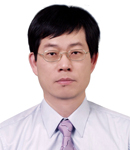 |
Ku, Chiu Jen |
I, Dr. Ku, Chiu Jen, am now a researcher in the Global COE program. I earned my Ph. D. degree from Colorado State University in 2004 and M.S. degree from University of Missouri – Rolla in 1995 during my stay in United States. I am also a registered professional engineer in Ohio State since 2000. Before going to United States, I have worked in several universities in Taiwan. The experiences that I have been several different universities in the world are one of important assets in my life.
My major research interests focus on system identification techniques and structural control strategies for wind engineering applications. Currently, I am working on the research project of ambient vibration testing and analysis of large-span spatial structures. Dynamic properties and behaviors of the spatial structures are investigated via modal testing, modal analysis, and finite element model updating. In addition, the nonlinear and non-stationary dynamic properties in the spatial structures are being investigated based on developed identification techniques, such as the Hilbert-Huang transform or adaptive extended Kalman filter.
My future research plans would like to focus on structural health monitoring and natural hazard mitigation. I wish my continuous endeavors will provide many benefits to the wind engineering community in the years to come. |
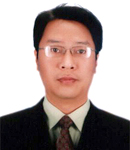 |
Le Thai Hoa |
Global COE Associate Professor
Ph.D. (Kyoto University)
M.Sc. (Vietnam National University)
Civil Eng. (University of Transport and Communications)
Tel.: 81-46-242-9658 (Ext.2466); Fax.: 81-46-242-9656
Email: thle@arch.t-kougei.ac.jp or thle@vnu.edu.vn
Web: http://www.coltech.vnu.vn/~thle
Research Interests:
Wind Engineering; Bridge Aerodynamics
Structural Engineering; Structural Dynamics
Wind Resistant Design; Wind Tunnel Tests
Ambient Vibration Monitoring
POD; Time-frequency Analysis; Numerical Simulation Methods
Biography:
Dr.Le has received his Civil Engineer (Bridge/Structural Engineering) from Hanoi University of Transport and Communications, his M.Sc (Mechanical Engineering) from Vietnam National University and Dr.Eng (Wind Engineering and Aerodynamics) from Kyoto University, Japan. He had worked for some research/academic institutions as the Research Institute for Transport Science and Technology (RITST), Vietnam Academy of Science and Technology (VAST) and Vietnam National University (VNU). In early of 2009, he participated to the Global Center of Excellence (Global COE) Program, Department of Architectural Engineering, Tokyo Polytechnic University (TPU) with a current position of Program Associate Professor.
Dr.Le has academic and teaching experience, including consulting, analysis and design as bridge/structural engineer. He also gained several prizes and awards in Japan and Vietnam for his researches. He recently focuses on ambient vibration monitoring and assessment of wind-excited structures as well as new tools based on POD and time-frequency analysis for evaluating wind effects on structures. |
 |
Napoleon Enteria |
Research Statement
The issue of global warming is a complex phenomenon, indeed a global problem. Rapid and continuous burning of conventional energy sources brought about by the already-large-but-still increasing world populations tremendously complicates the solution of the problem. In addition, urbanization and increasing standard of living aggravate the situation.
Buildings consume large amount of conventional energy sources to support their operation. Demand for good quality, cool indoor air for thermal human comfort is an important issue in reducing building energy consumption. Application of natural and non-conventional cooling and ventilation is necessary to solve the problem on building energy consumptions without affecting the occupants' comfort.
Asia-Pacific countries have diverse weather conditions (tropical, sub-tropical and temperate). These countries have different situations- geologically, economically, socially and technologically. Henceforth, regional application of natural, non-conventional cooling and ventilation complex challenges. The proposed research is envisioned to apply these natural concepts in the Asia-Pacific countries.
The research will investigate the weather conditions of the region. It will also investigate current building designs to find out if they are suited to the local conditions with due considerations of incorporating natural and non-conventional cooling and ventilation. The expected research outcome shall be the wide applicability and acceptability of the natural and non-conventional cooling and ventilation system.
Personal Background
He obtained his Ph.D. Engineering (Built Environment) degree from the Tohoku University last March 2009. He got his M.S. Mechanical Engineering and B.S. Mechanical Engineering degrees from the Mindanao State University-Iligan Institute of Technology in 2003 and 2000, Philippines.
He has over 20 papers in the national and international conferences and journals. His research activities are in the area of energy and environment. Presently, he is a member of the Architectural Institute of Japan (AIJ), Society of Heating, Refrigerating and Air-Conditioning Engineers of Japan (SHASE), Philippine Society of Mechanical Engineers (PSME), and American Society of Mechanical Engineers (ASME). |
 |
Rei Okada |
My name is Rei Okada. I earned Ph. D degree at Tokyo Institute of Technology in 2001 and researched following topics in Tokyo Institute of Technology, University of Illinois at Urbana Champaign, and Nihon University in nearly a decade.
"Wind tunnel test of wind-induced oscillations for high-rise building with hysteretic damper", "Rational polynomial approximation modeling for dynamic characteristics of visco-elastic damped structure", "Development of hybrid technique for verifying effect of interactions between oscillating structure and surrounding flow", "Consideration for methodology of wind environment assessment in vicinity of buildings", "Effective ventilation considering fluctuation component of pressure distribution", "Wind pressure acts on mesh seat in temporary housing work", and "Dynamic collapse tests of miniature reinforced concrete frames under high-gravity field using large centrifuge".
I find great pleasure in being part of many kinds of research topics. Fortunately, I have researched under many different environments and enlarged number of friends and colleagues.
And now, I am very happy to be able to work as a member of Global COE in TPU!! I'm engaged on 2 projects in GCOE program.
1st topic is 'Systematization of Wind-Induced Disasters and Development of Assessment Approach'. Purpose is establishment of assessment procedure for wind hazard and minimization of damages. For this procedure, acquisition, arrangement, and systematization of information are needed. These data will become basement of assessment for wind hazard. First target is making database for wind hazard.
2nd topic is 'Monitoring, Networking and Modeling of Wind Response using GPS'. Acceleration meter is enough technique for measuring response by earthquake. However, it is not enough for wind. Because it has mean value. This component is not able to capture by acceleration record. Target of this topic is establishment of real time health monitoring system using Real Time Kinetic GPS to estimate structural response including mean components.
(300 words) |
 |
Lu GUO |
Birth Place: Beijing, China
1999 Ph.D. Tohoku University, Japan Supervisor: M. YAMADA
1992 M.S. Chinese Academy of Building Research, China Supervisor: T.T. LAN
1985 B.S. Department of Civil Engineering, Tsinghua University, China
Research Topic:
Wind Resistant Design Method for Cladding of Building Structures
This project is supported by Japan Society for the Promotion of Science from 2009-2011. Research objectives are to investigate the fluctuating wind pressure behaviors of monocoque and large span structures by wind tunnel experiments, and to understand the maximum stress distribution of the structures using FEM analysis. Base on the experimental and analysis results, to propose a high accurate wind load evaluation method for cladding of building structures. |
 |
Wu Zhehua |
Better technology, better humanity is a dream of mine.
After I completed M. Eng at Harbin Institute of Technology, China, in 1996, I pursued my career as a structure engineer with deep enthusiasm. I obtained national occupational licenses such as the first grade registered structure engineer, the second grade registered architect, supervision registered engineer,the first grade registered constructor, and computer software engineer. I have been always considering how to combine technical with economic, environmental, aesthetic, and social aspects. So I decided to start my PhD at Zhejiang University in 2000. I joined the structural computing for wind group and devoted to applying magneto-rheological damper to structural control. My working experience had, in turn, broadened my knowledge scope and allowed me to participate in various research activities. After completing the study of the PhD, I carried out my postdoctoral research in Tongji University in 2004. It shaped my research interests in wind hazard mitigation, cable vibration control, prestressed structure design and complex structure analysis. I was lucky to work at the Chinese University of Hong Kong as research associate from 2007 to 2008. It offered me a valuable feeling that teamwork and leadership play key roles in an international society. Then I taught in the department of civil engineering, Shanghai University. My first book on control vibration was published by the science press in China, and more than 50 papers were published.
Now I am a Global COE researcher under the supervision of Prof. Tamura in Wind Engineering Research Center, Tokyo Polytechnic University. I believe in that it would be time to devote my effort for my lovely whole people to build new bright future. |
 |
Kenji Tsukamoto |
|
The PhD degree was given from Niigata Institute of Technology in 2005. The dissertation is "Establishment of evaluation procedure on urban thermal environment with regard to land use and land covering". In 2005-2006 I have worked to develop a measurement procedure of heat rates generated from urban surfaces and also have evaluated urban thermal environments using numerical analysis in the tropical regions. Current research work is the building energy simulation by utilization of cross-ventilation technique. Through the wind tunnel experiments we are making an input database of wind pressure coefficients and tangential dynamic pressure coefficients about a typical Japanese detached house. With a network model, we are investigating to evaluate the reduction of cooling load by cross-ventilation. This is expected to conduct more accurate estimation for saving energy consumption of the air-conditioning system than by conventional methods. Another research theme is to utilize roof windows effectively for obtaining cross-ventilation flow rate. In highly dense city blocks as in Tokyo, it is very difficult to obtain high enough ventilation flow rates when opening windows are attached to building walls. The use of night cross-ventilation is also impractical for security reasons. However, roof windows have high security performance and do not have large effects on gross building coverage ratio. Therefore, we are investigating the applicability of roof windows in highly dense city blocks for cross-ventilation. |
|
|
|









